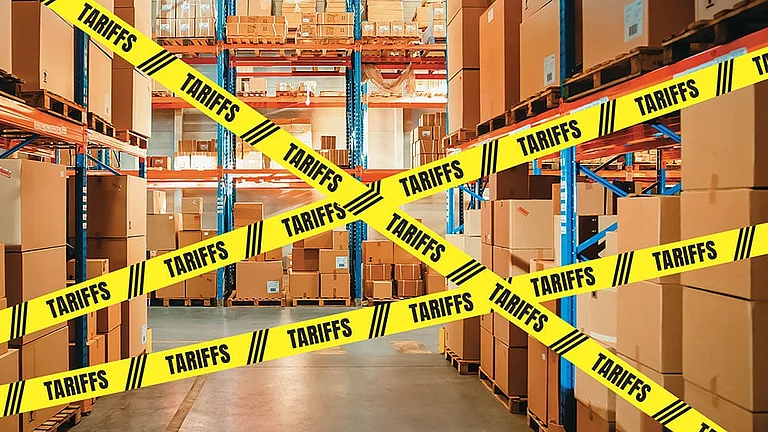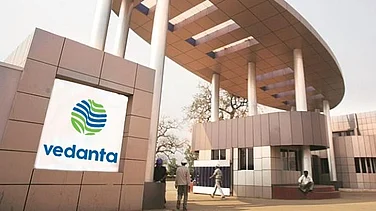The Indian textile and knitted fabric industry is facing a “bit of uncertainty” amid the ongoing political developments in the neighbouring country of Bangladesh, Finance Minister Nirmala Sitharaman said on Saturday, August 10.
“I have held discussions on our textile garment investments in Bangladesh, many of which are from Tamil Nadu. The investments went there in good faith and they did well having gone there; exports from Bangladesh have also increased,” Sitharaman said at the media briefing held after the Central Board of Directors of the Reserve Bank of India (RBI).
Amid the student protests and ongoing political turmoil in Bangladesh, Sheikh Hasina resigned as the Prime Minister and fled the country last week. Soon after Parliament was dissolved leading to the formation of an interim government backed by the Bangladesh army. Nobel laureate Muhammad Yunus took oath on Thursday as the head of the interim government.
Bangladesh is facing its worst political crisis since its 53 years of independence. The country is an important partner for India’s textile industry. It serves as a crucial market for Indian textile exports and a significant manufacturing base for garments that are exported globally.
Significance of India-Bangladesh Trade:
India is a significant exporter of cotton and synthetic fibers to Bangladesh, serving as a crucial raw material supplier for the country’s textile industry. Ready-made garments represent more than 85 per cent of Bangladesh’s merchandise exports and over 70 per cent of its total exports. In trade, Bangladesh is India’s biggest partner in the subcontinent, and India is Bangladesh’s second biggest partner in Asia after China. Their total bilateral trade amounted to $13 billion in the financial year 2023-24, according to the Commerce Ministry.
Bangladesh has witnessed rapid growth in its exports of readymade garments and textile products, making it the second-largest exporter of such products in the world after China. In 2022, Bangladesh’s textile exports were worth $45 billion which is more than double that of China.
Shares of Indian manufacturers including Gokaldas Exports, Vardhman Textiles, Sangam India and GHCL Textiles have declined up to 6 per cent in the last one month as of August 13, 2024.
How the Bangladesh Political Crisis will impact Indian textile market:
The spinning sector is expected to face short-term issues as Bangladesh is a major buyer of Indian cotton yarn and fabrics. Apparel imports from Bangladesh have already reduced in the past few months, and a further decline in imports is anticipated. Consequently, delays in the delivery of goods for India’s upcoming festival season will help Indian manufacturers to get more orders from domestic retailers.
According to experts, the Bangladesh crisis will affect the Indian textile industry in the short term. However, some companies from the textile and spinning industries are expected to benefit from the crisis.
Indian companies with manufacturing operations in the crisis-hit country will face challenges in maintaining their production flow, leading to delays and potential shortages in the market. This disruption could affect the availability of products and might force companies to seek alternatives, investment services provider ICICI Direct said in a report.
“While we are concerned about the impact on the supply chain and the potential delays and disruptions it might cause, we are hopeful that the situation will improve soon,” Chandrima Chatterjee, Secretary General, Confederation of Indian Textile Industry (CITI) was quoted as saying by ICICI Direct.
In 2022, China and Hong Kong were the largest exporters of textile and apparel products, constituting around 34.4 per cent of global exports. Bangladesh was the second largest exporter of textile and apparel products, as per CITI report.
Neeraj Jain, joint managing director at Vardhman Textiles Ltd said Bangladesh is the biggest customer for yarn exports as of now. With around 25 per cent to 30 per cent of exports going to Bangladesh, any disruption over there will create issues here as well.
“However, this situation is relatively minor and has not yet impacted demand. But unless it is resolved or it continues for a long period, then there could be a concern. But as of now, there doesn’t seem to be an issue,” Jain told analysts during the earnings call.
Blessing in disguise to Indian textile manufactures:
Industry experts anticipate that India could gain an additional $300-400 million in business per month if 10-11 per cent of Bangladesh’s export orders are moved to Indian textile hubs like Tiruppur. Bangladesh’s monthly apparel exports are valued between $3.5-3.8 billion. The country has a significant market share in the European Union, the United Kingdom, and the United States. On the other hand, India’s current monthly exports range from $1.3-1.5 billion.
“Indian textile industry will certainly stand to benefit since importers from Bangladesh will look for opportunities in countries like India. Indian textile hub Tirupur can benefit from this crisis,” Dr VK Vijayakumar, chief investment strategist at Geojit Financial Services said.
Sharad Chandra Shukla, director at Mehta Equities Ltd says as China was having a difference of opinion with the Western world, the China +1 strategy emerged. This helped Bangladesh, India and a few other countries in South East Asia. However, Bangladesh had an advantage due to cheap labour costs and also lower logistic costs due to the nearness to ports.
Around 25 per cent of the manufacturing units in Bangladesh are owned by Indian companies like Shahi Exports, House of Pearl Fashions, and Gokaldas Images. With the ongoing crises in Bangladesh, the companies might shift their base back to India. According to central bank data, Bangladesh imported RMG raw materials worth $7.92 billion in the first half of fiscal year 2024.
According to Shukla, it is an opportunity for all textile exporting countries in South East Asia but it will depend on the efficiency of the manufacturing units as India has its own set of problems like outdated labour laws and higher logistic costs due to poor infrastructure.
Another major challenge that Indian companies face in Bangladesh is the delay in payments to 30-35 days instead of the normal 7-10 days cycle. Delay in the issue of Letter of Credit (LC), poses a major roadblock for companies having substantial export volumes to Bangladesh.
“Since its early days, we do not know how the Bangladesh crisis will unfold. If the new government succeeds in restoring law and order the situation will be back to normal,” Vijayakumar said.
Former Bangladesh Bank governor Salehuddin Ahmed was given the charge of the Finance and Planning Ministries by interim leader Muhammad Yunus.
Ahmed said the government's priority is to restore the trust of common people in the banks while resuming the operations of the central bank. The country's economy has slowed down because of various reasons. The goal will be to revive the economy as quickly as possible. Once the economy comes to a standstill, it becomes quite difficult to restart it. We do not want it to come to a halt.
The political turmoil in Bangladesh presents an opportunity for India’s textile and apparel industry. With the capacity to absorb additional orders and established trade relations, Indian companies can gain a major share of the diverted orders and strengthen their presence in the global market. However, challenges such as payment delays and lack of infrastructure should be addressed to fully capitalize on this opportunity.































